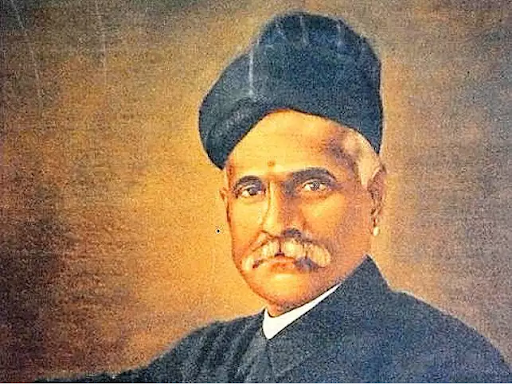
This section of the website showcases legendary Indian artists, including painters, graphic artists, contemporary artists, and sculptors. These artists’ works hold significant value for art exams, offering a rich and diverse range of artistic styles and techniques. Exploring their creations can provide students with valuable insights into the Indian art scene and inspire their own artistic endeavours.
India has a rich artistic heritage, and there have been many talented painters who have made significant contributions to the world of art. Here are ten renowned painters from India:
Raja Ravi Varma (1848-1906): Considered one of the greatest painters in Indian history, Raja Ravi Varma is known for his portrayal of Indian mythology and epics, as well as his realistic and detailed portraiture.


Amrita Sher-Gil (1913-1941): A pioneer of modern Indian art, Amrita Sher-Gil’s works often depicted the lives of Indian women and the rural poor. Her unique style blended Western influences with traditional Indian art forms.
Jamini Roy (1887-1972): Known for his bold and simplistic style, Jamini Roy’s works showcased folk and village art traditions of Bengal. He drew inspiration from Indian folk art, particularly Kalighat paintings.


Tyeb Mehta (1925-2009): Tyeb Mehta was a leading figure of the Indian modern art movement. His iconic “Diagonal Series” and “Mahishasura” painting are widely acclaimed and symbolize the struggle of the individual against oppressive forces.
M.F. Husain (1915-2011): Often referred to as the “Picasso of India,” Maqbool Fida Husain was a prolific artist known for his versatility and contemporary style. His works covered a wide range of themes, from Indian mythology to social issues.


S.H. Raza (1922-2016): Syed Haider Raza was a prominent Indian modernist painter. He was known for his geometric abstraction, particularly his iconic use of the bindu (dot) and vivid colour palette.
F.N. Souza (1924-2002): Francis Newton Souza was a co-founder of the Progressive Artists’ Group and a key figure in the Indian modern art movement. His works often reflected his personal anguish and existential themes.


Subodh Gupta (born 1964): A contemporary artist, Subodh Gupta gained international recognition for his large-scale installations and sculptures. He often incorporates everyday objects from Indian life, such as stainless steel utensils, to explore themes of globalization and cultural identity.
Jogen Chowdhury (born 1939): Jogen Chowdhury is known for his distinctive style of figurative art, characterized by his use of bold lines and cross-hatching. His works capture the essence of everyday life in Bengal and often explore socio-political themes.


Anjolie Ela Menon (born 1940): Anjolie Ela Menon is a prominent contemporary Indian artist known for her figurative paintings and murals. Her works reflect a strong sense of spirituality and often feature hauntingly beautiful and enigmatic subjects.
These ten painters have significantly influenced Indian art and have left a lasting impact on the global art scene. However, there are many more talented and celebrated painters in India, and this list is by no means exhaustive.
Bengal School
The Bengal School of Art, also known as the Bengal Renaissance, was a prominent art movement that originated in Bengal, India during the early 20th century. Here are 10 main painters associated with the Bengal School:
- Abanindranath Tagore (1871-1951): Considered the founder of the Bengal School, Abanindranath Tagore played a pivotal role in reviving traditional Indian art forms and combining them with Western techniques.
- Nandalal Bose (1882-1966): Bose was a disciple of Abanindranath Tagore and one of the leading figures of the Bengal School. He is known for his exquisite paintings depicting Indian mythology and folk traditions.
- Gaganendranath Tagore (1867-1938): The elder brother of Abanindranath Tagore, Gaganendranath Tagore was known for his experimental and modernistic approach to art. He explored various styles and techniques, including cubism and caricature.
- Jamini Roy (1887-1972): Jamini Roy is renowned for his bold and simplistic style inspired by the folk and rural art of Bengal. He combined traditional techniques with modern aesthetics and focused on portraying the essence of rural life.
- Asit Kumar Haldar (1890-1964): Haldar was a prominent artist associated with the Bengal School. He painted landscapes, portraits, and mythological scenes, often incorporating elements of Indian classical art.
- Samarendranath Gupta (1897-1983): Gupta’s works were influenced by the traditional art of Rajasthan and Mughal miniatures. He often painted religious and mythological subjects, with a focus on intricate details and vibrant colors.
- Mukul Dey (1895-1989): Mukul Dey was known for his etchings and sketches, capturing the everyday life and cultural nuances of Bengal. He played a significant role in promoting printmaking as an art form in India.
- Sunayani Devi (1875-1958): Sunayani Devi was one of the few women artists associated with the Bengal School. She specialized in watercolor paintings and was particularly known for her portraits of women from rural Bengal.
- Hemen Majumdar (1894-1948): Majumdar was known for his realistic and detailed portraits, often depicting people from diverse social backgrounds. He was a master at capturing the nuances of human emotions.
- Kshitindranath Majumdar (1886-1951): Kshitindranath Majumdar was a versatile artist who experimented with different styles and mediums. He is remembered for his intricate illustrations and mythological paintings.
These artists, along with several others, contributed to the revival of Indian art and played a significant role in shaping the Bengal School movement.